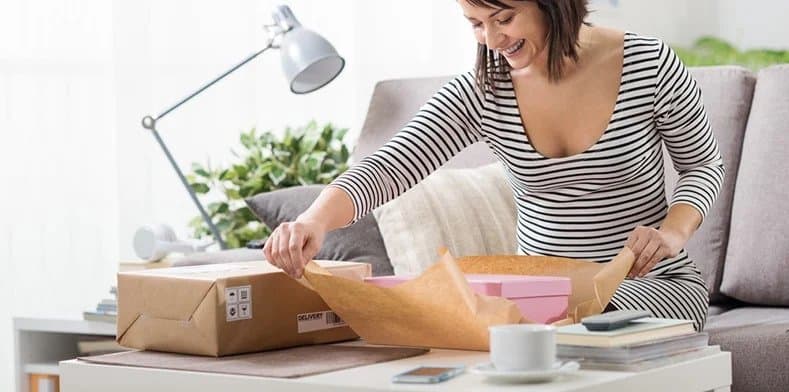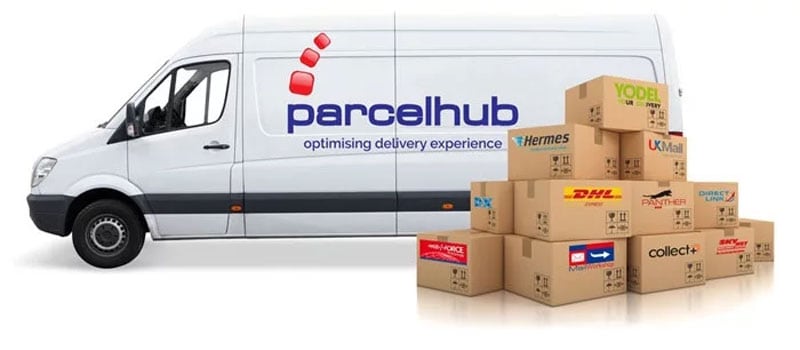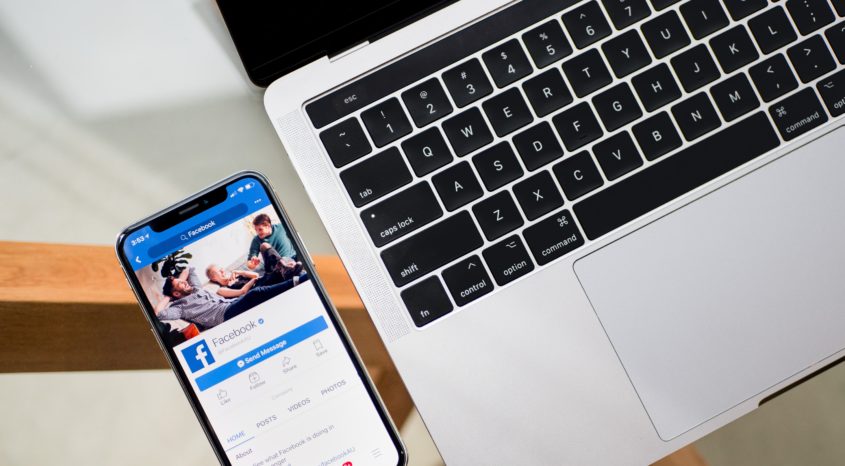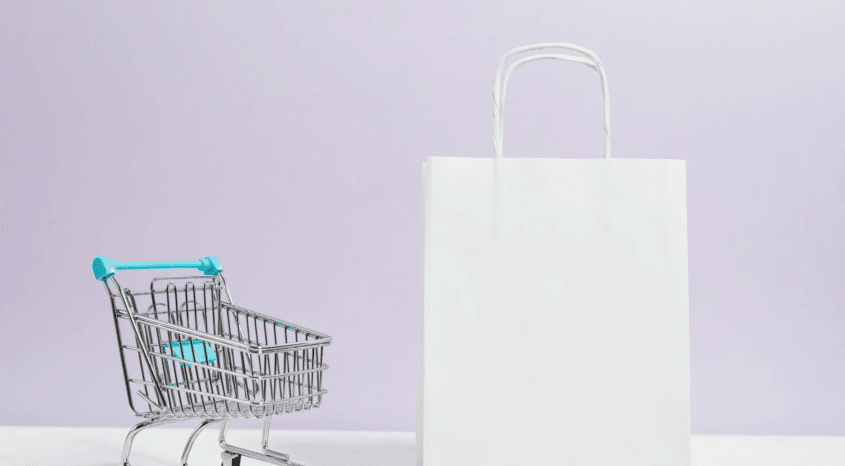What is the portal to true personalization? Parcelhub, experts in ecommerce shipping solutions, believe it to be the consumer’s front door. In this guest blog, they discuss how to make delivery part of the move to personalized customer engagement.
Personalization of the user experience around retailers and brands is one of the hottest topics in retail today. With High Street shops teetering precariously and some online retailers having woes, much attention has been focused on how to personalize the marketing and interaction between brands and their consumers.
Largely this is talked of in terms of digital channels and how to make the web and mobile experience as personalized as possible. It even extends to marketing – taking those marketing emails from being addressed by name to offering things that the specific person actually wants.
But what about delivery: does it too have a role to play in the personalization drive?
It may not be the first place that springs to mind when looking at the personalization play, but if you pause for thought, it becomes obvious that the answer is “yes, it does”.
Delivering is the one place where an online retailer, or brand – or any merchant with online customers – actually makes personal, face-to-face contact with that customer; it doesn’t really get much more personal than that.
So how can retailers and brands leverage this personal contact at the delivery stage and what can logistics firms do to help?
Personal fulfillment
Personalization online revolves around knowing and using the data the retailer has about what the consumer likes and their preferences. This can be extended to delivery and, as such, is the easiest area of personalization to bring to bear on this part of the shopping chain.
Here, knowing what the shopper is buying, where they are buying and their previous shopping history should allow the retailer to not just offer the right range of delivery options, but to also offer the best option without asking.
As delivery becomes part and parcel of the ‘cost’ of buying online, loyal, repeat customers can be rewarded by, say, default premium delivery.
Let’s face it, it is essentially what millions of Amazon Prime subscribers pay for – it is increasingly a proven model. In the Prime case, shoppers are paying for a personalized service, but it could be extended, by other retailers, to be part of their personalization play.
With the Tetra Pak Index 2018 predicting that 10-minute delivery will be standard by 2025, the idea of offering ‘instant’ delivery as a part of a personal service makes sense. Even as a premium offering, it adds that personal experience – “you get your stuff in 10 minutes, you’re special” sort of thing.
Where it’s at
Again, like personal fulfillment (as opposed to outsourced fulfillment), getting the goods delivered in your preferred time-frame to where the shoppers want the delivery is another highly personalized touch.
Wouldn’t it be a more personalized service to order it from your phone, in your office and have it delivered to you within the hour at your desk?
Not only would your colleagues be impressed, but also you would be almost instantly sated. You would feel personally valuable to the retailer and happy with the good service.
And your impressed colleagues are the real reason for doing this. If other people see how personal a delivery service is – straight to you within a few minutes of ordering – they too will want some. They will probably sign up too. Now that is much better than sending out marketing emails and shows the power of the delivery process as a marketing tool in the personalization age.
In package promotion
Something that can be done in the here and now is personalizing what is in the package. Already, some retailers offer packaging that delights when opened, while others slip a leaflet or marketing flyer into the box.
But why stop there? The box is what people first see and feel when their order arrives. It is, along with the delivery driver, the first point of contact between brand and consumers. It should be made the most of – and it can be so easily done today.
Yet it’s much underused. A study by Sealed Air in 2017 revealed branded packaging increases positive customer feedback by 64%. Nevertheless, 38% of parcels assessed in Macfarlane Packaging’s unboxing research in the same year had no branding on the pack and a staggering 30% didn’t reflect the value of the brand.
First of all, packages should arrive damage-free and should be easy to open. While not strictly speaking ‘personalization’, this sort of thing is the difference often between a loyal, repeat customer and losing the next sale.
When the box is popped open, having a greeting featuring the customer’s name is a nice and personal touch. Adding other information can also make it valuable and, as we shall see, making the package ‘smart’ is perhaps the next logical step.
However, personalized packaging offers an interesting way to engage consumers right now. Witness Coca-Cola’s named bottles campaign, or Marmite offering to get your name on a jar. These offer customers something to seek out and to keep – and simply having your name on something like that adds value.
Another example of this is Heinz, which sold personalized cans of soup via its ‘Get Well Soon’ campaign for over twice the price of a regular item. With the added incentive of £1 per can sold also going to charity, consumers appeared to be more than willing to pay the extra, with more than 96,000 people logging into Facebook to find out more.
This opt-in element is partly why the campaign worked so well. Instead of using the concept to drive its main television ads, Heinz aimed to create a trickle effect, with consumer interest being subtly piqued, whereas before, users would have to actively seek out the service on social.
Smart packaging
Smart packaging technologies based on unique digital codes allow each and every product package to be given a unique identifier. These codes can be read by data scanning devices – typically used by the delivery driver – but they can also be ordinary smartphone, linking to vast amounts of information and opening up all kinds of possibilities.
This creates an interactive channel with individual consumers from their package, allowing brands to have a real-time conversation with the consumer, sharing details on the sourcing of raw materials, nutritional facts, as well as games, promotions and environmental information – in fact, anything the retailer or brand can think of.
At the same time, with insights captured through these digital codes, brands can continuously improve the shopping experience and make it ever more personalized for the consumer.
Ecommerce retailers are also increasingly calling for unique identifiers compatible with the robotic technology used in their warehouse and distribution, as this is widely seen as the key to success in ecommerce. Data and full traceability helps them navigate complex logistics and improve efficiency, moving closer to real-time order fulfillment.
Alexandre Carvalho, Director Global Marketing Services at Tetra Pak, explains: “The rise of online grocery is a great opportunity for food and beverage brands, and packaging plays a key role in supporting their success. In particular, smart packaging helps drive greater transparency and efficiency in the supply chain, up and down stream, while also enabling a direct, interactive relationship with the consumer. We believe this rapidly developing technology, tried and tested by us since 2016 and now being deployed in Europe, can help our customers explore new avenues, driving growth in the years ahead.”
In the driving seat
The first place where the consumer and the brand literally come face-to-face is when the delivery driver knocks on the door and hands over the package. It is here that personalization can be truly delivered – a good experience around this makes all the difference.
Paul Skeldon, Editor at Internet Retailing explains: “Consider my local DPD driver Mickey – see I know his name. I get a text from him/DPD in the morning saluting me by name and telling me when Mickey, my delivery guy, will be delivering.
“When he does arrive, he greets me by name, chats about the weather, gets me to sign and gives me my package. Then, whoosh, he is gone.
“If I am not going to be in, I can text him and rearrange. This is all done using clever CRM technology, but I don’t think of that – even as an industry insider, as it were – I just feel like my delivery is personal and just for me and that Mickey is my guy.
“And I now know which retailers that I shop with use DPD and I choose them because of this. It has turned into a perfect bit of marketing through personalization. The goods arrive when they say they will, I have been told they will in a personal message, and my delivery driver knows me.”
Conclusion
This last example, it can be argued, is personalization in the here and now with delivery.
Imagine if it was combined with all these other factors? The more the retailer knows about the consumer, the more precise they can be with their delivery. Couple that with delightful packaging and even adding in some sort of interaction with the box – that also provides a link between the retailer and consumer in the digital world – and suddenly the physical and digital worlds are brought together.
Perhaps, while looking at how to make their businesses truly omnichannel, retailers and brands need to look not just at their store footprint and online presence, but at the other physical dimension they have – delivery. Perhaps the consumer’s front door is the real gateway to personalization?
About Parcelhub – The bespoke parcel shipping solution.
Parcelhub is a multi-carrier shipping and ecommerce customer services solution. Flexible and scalable, it integrates seamlessly with marketplaces, ecommerce platforms, OMS and WMS systems, providing hundreds of multichannel retailers, global brands and wholesalers with one access point to 20+ carrier partners and 300+ services.
Distributing more than 6 million parcels on its own carrier contracts every year, Parcelhub’s free multi-carrier shipping software grants hundreds of national and global businesses access to ‘pooled volume’ discounted rates from its carefully selected range of carrier partners, including Yodel, Hermes, DPD, UK Mail, DHL, Whistl, UPS, DX, Parcelforce, CollectPlus, SkyNet, ArrowXL, Interpost, Panther Logistics, Direct Link and Palletforce. Dedicated proactive parcel management comes as standard.





